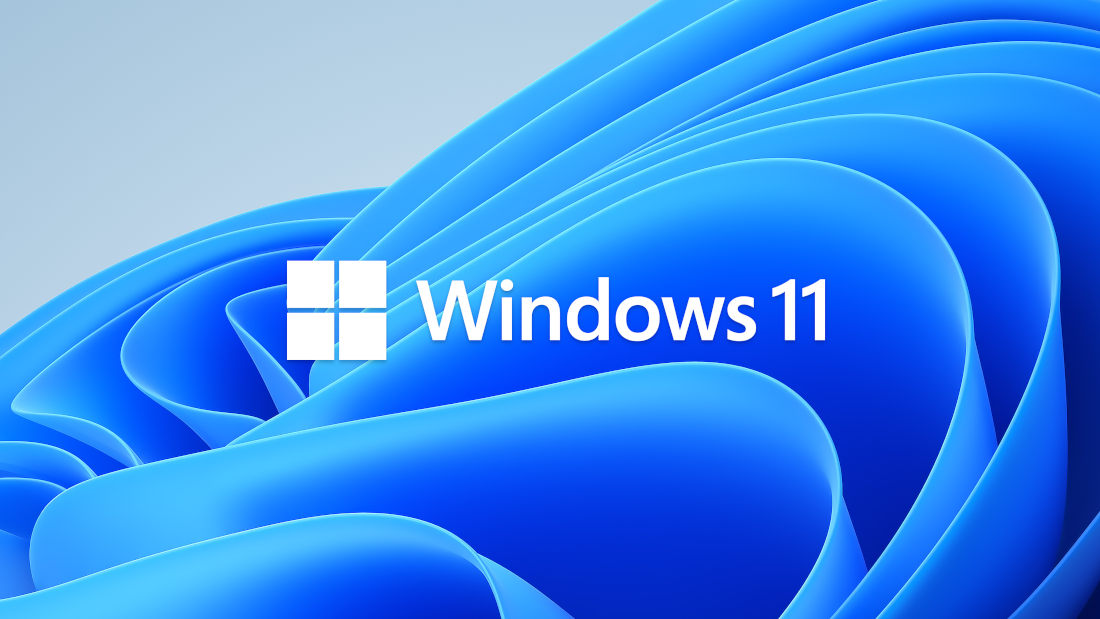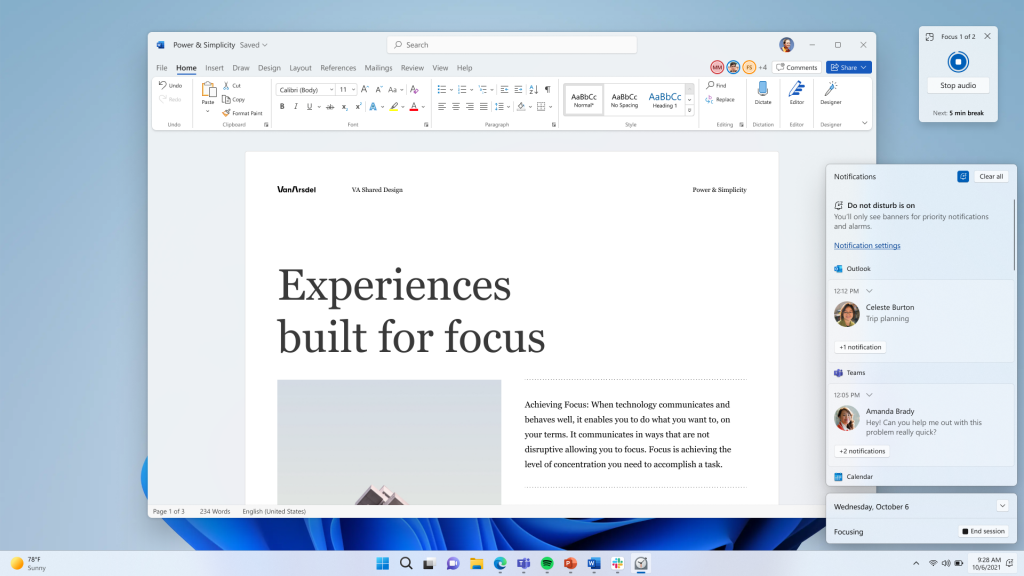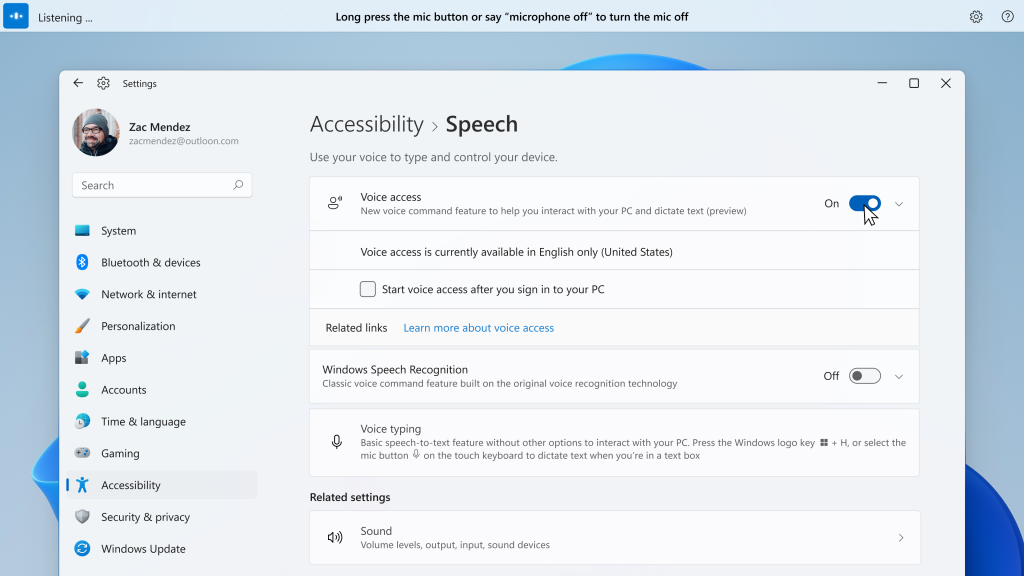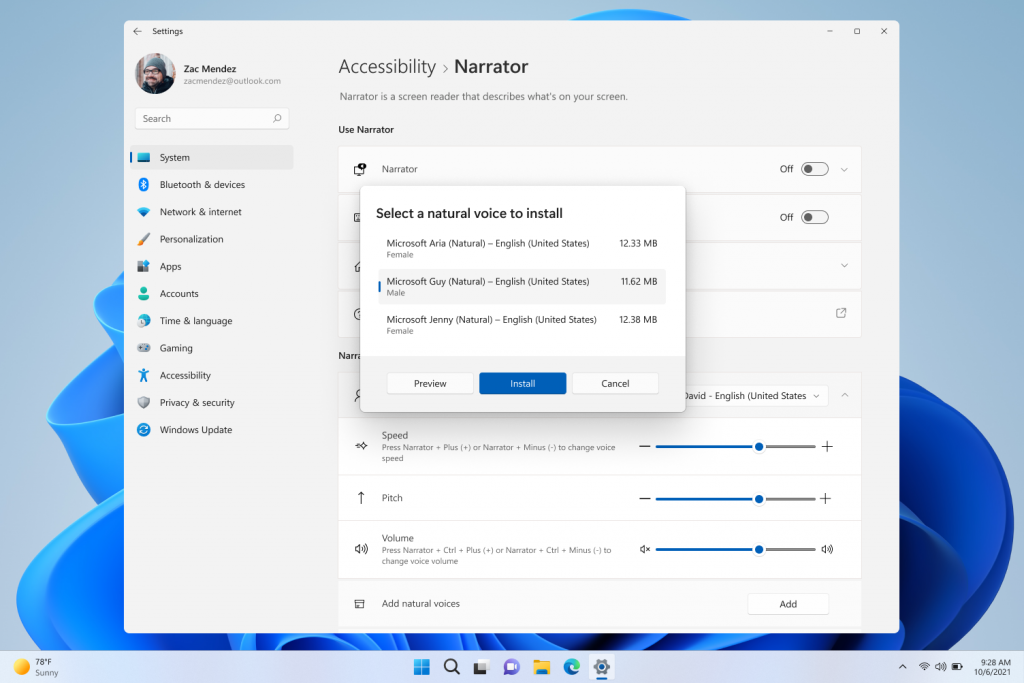
Microsoft has announced many new accessibility features that coming to Windows 11 at its Accessibility Summit 2022 keynote. The company is apparently preparing Windows 11 22H2 for RTM this month, and it is now nearing general release. Among the new features are a more immersive Focus experience, system-wide live captioning, more efficient voice access tools, and more realistic Narrator voices. Most of these new features to make Windows more accessible have already been tested by Windows Insiders in the Dev and Beta Channel versions.
Windows Focus
“Focus” is an adaptation of previous versions of Windows’ “Focus Assist” and “Do Not Disturb” abilities. It’s now included in the Notification Center and can be activated with a click of the mouse. Once set, Windows will limit interruptions by hiding notifications except as otherwise configured.
Furthermore, Microsoft has added a new Focus Sessions feature to the Notification Center, which allows you to easily create a “work” timer that will activate Focus mode for a specified duration. When activated, Windows will activate Do Not Disturb and disable taskbar badges to further reduce interruptions.

Live Captions
The forthcoming Live Captions option from Microsoft is a tool that is already available for Android devices. It’s a system-wide subtitling function that analyses audio from any source and displays text when it identifies spoken words. It’s great to see Microsoft developing its very own counterpart for Windows users.
The utility is also highly customizable. It can be positioned anywhere on the window, including the top, side, and bottom. You can also adjust the text and caption panels’ size, font, or transparency. Additionally, once preliminary setup is done, these Live Captions are appraised and are shown offline, so you do not have to be connected for it to work.

Voice Access
The latest Voice Access option in Windows 11 is a more efficient version of the existing Voice Recognition function that allows you to operate your PC using only your voice. Voice Accessibility makes it possible to talk to Windows instead of using a mouse and keyboard by using words and phrases.
When enabled, the user could perhaps ask Windows to do tasks like “Open Start” or “Go to the Microsoft Store,” and afterwards interact with the app using common commands like “Open webpage” etc.

Windows Narrator
Finally, Microsoft is stressing more realistic vocals for the Windows Narrator function. Microsoft Sam’s voice has been removed, and the latest ones are Microsoft Aria, Microsoft Guy, and Microsoft Jenny voices, which are now available. Their “natural” tones are said to be easier to understand, according to Microsoft.
In addition to these features, Microsoft has launched a new Inclusive Tech Lab to assist it in developing future products that are accessible to all individuals. It has also shown off a new line of adapted PC accessories, pointed out new accessibility features in Edge, and told Xbox game developers how they can make games that are easier to use.

Speaking on the introduction of new features, Jeff Petty and Carolina Hernandez, Windows Accessibility Leaders, said in a blog post that,
Last year, Microsoft renewed and strengthened its commitment to closing the disability divide; to work toward improving educational and employment opportunities for people with disabilities around the world. And that commitment has been central to the development of Windows 11: the most inclusively designed version of Windows yet.
